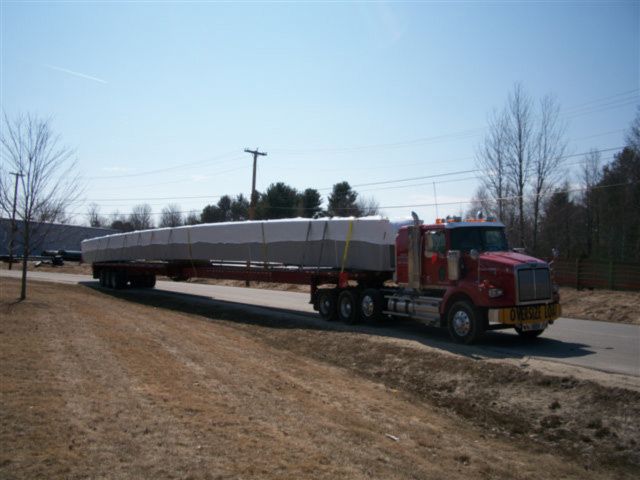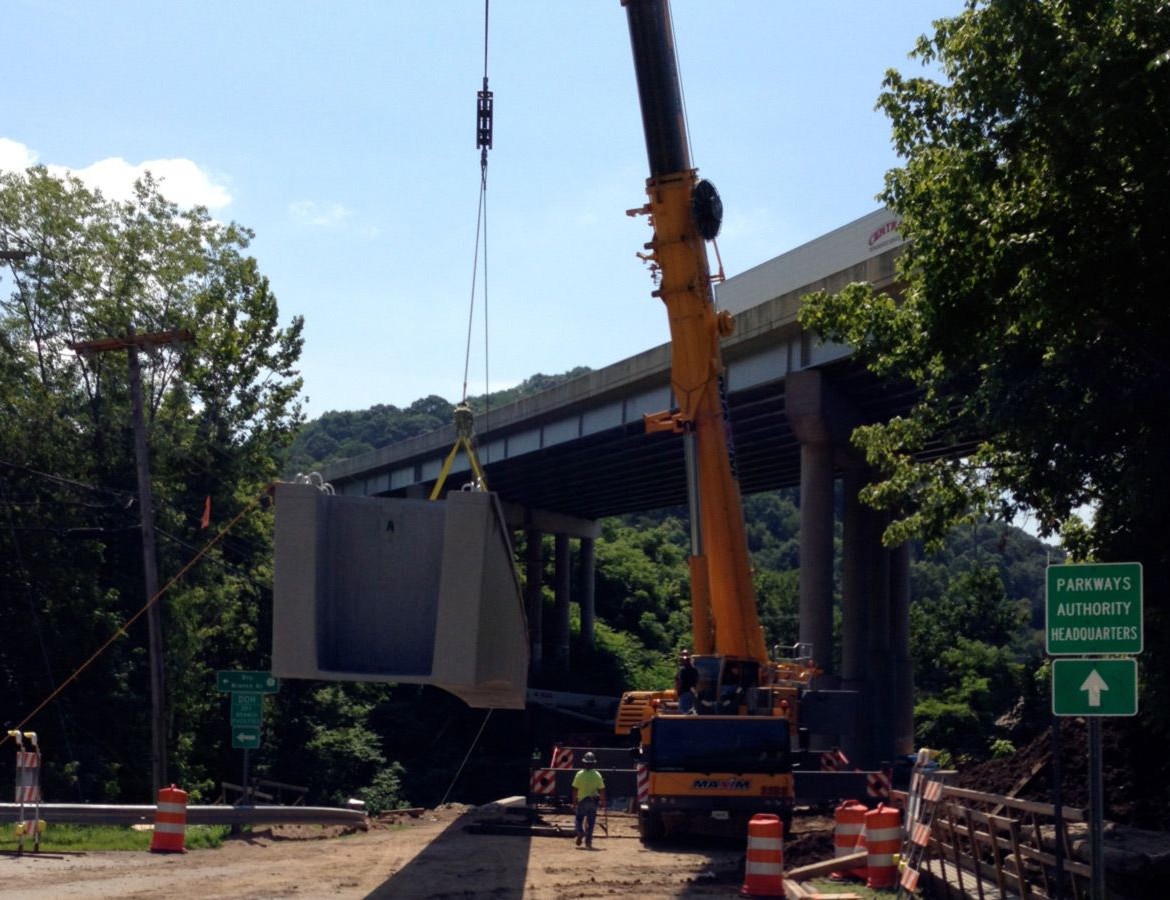



Bridges are an essential component of our built environment. Every bridge provides an element of convenience for the people who use it on a regular basis, and reconstruction can often be disruptive to the community. The Dry Branch Bridge represents an example of a crossing that provided a critical link for a school bus route that necessitated rapid replacement to avoid an exceptionally long detour for school children. Replacement was further complicated by the bridge’s location directly underneath Interstate I-77/64 with minimal headroom for placement.
The West Virginia Department of Highways knew a unique solution was needed to replace the bridge on West Virginia Route 60/29 in Kanawha County. The contractor, Orders Construction, was able to shoehorn the 106-foot, double-web Hillman Composite Beams (HCBs), with an empty weight of only 20,000 pounds, into the narrow envelope created by the I-77/64 Bridge overhead, a massive bridge column to the right of the crane and utility lines roughly 30 feet to the left of the crane. Despite the length of the girders and the tight location, the contractor set all three HCBs in less than three hours. With no diaphragms or transverse post-tensioning required between the girders, the crane could immediately be demobilized once the beams were set. Using concrete or steel girders of similar capacity would have required at least two large cranes and most likely a transfer girder to accommodate installation. In the end, the most time-consuming aspect of the installation was backing the girders down the narrow country road for delivery.
Another unique characteristic of this site is that Campbell’s Creek is known to overtop the existing bridge on almost an annual basis. As a result of this condition and the lightweight nature of the HCB, buoyancy forces had to be considered to ensure the bridge would not float away. Although calculations demonstrated the HCB would still be heavy enough to avoid uplift in a flood, special details were added to the inspection hatches on the bottoms of the HCBs to make sure the double-web boxes could fill and drain with the fluctuating elevations of the river if necessary.
With partial funding from the Innovative Bridge Research and Development (IBRD) program administered by the Federal Highway Administration, the Dry Branch Bridge showcases the longest HCBs deployed to date. Construction also included Stay-in-Place (SIP) pultruded FRP forms to expedite and simplify deck forming. The completed structure demonstrates the effectiveness of HCB for rapid construction of a bridge with very difficult site constraints.
Project Specs:
Single Span
Length: 106 ft. (32.5 m)
Width: 24 ft. (7.5 m)
HCB Piece Weight:
Empty: 20,100 lbs. (9,117 kg)
Filled: 60,400 lbs. (27,400 kg)
Owner: West Virginia Department of Highways
Contractor: Orders Construction
Completion date: September 2013
Project Sheet: Click here for downloadable PDF version